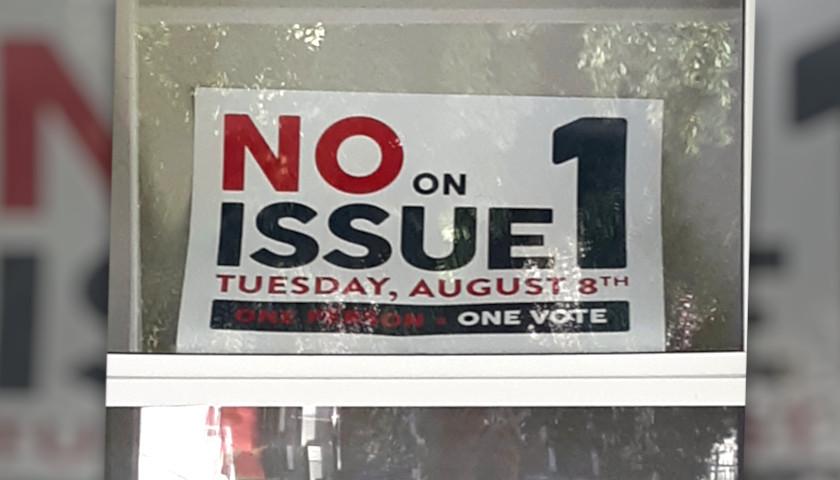by Manzanita Miller
Ohio has been making waves over the past few days because voters rejected a Republican-backed measure that would have made it more difficult to change the state’s constitution to add abortion as a “state protected” right.
The left has trumpeted the rejection of Issue 1 as a victory for Democrats and the Biden Campaign now believes Ohio is “in play” according to Politico. After the defeat of Issue 1, the Biden campaign is suddenly eyeing “long shot” states including Ohio and Florida, as well as focusing on three Rust Belt states Biden won in 2020.
However, what Democrats are largely ignoring is that turnout was down significantly in the Trump-friendly counties for the Issue 1 vote compared to the 2022 midterms and the 2020 Presidential election. That is, turnout was likely lagging because Trump was not on the ballot, nor were Trump-friendly Republican candidates.
Many of the deep red counties that voted “yes” for Issue 1 had significantly lower turnout than the 2022 midterms. Lawrence County, for example, which voted “yes” on Issue 1 in the Aug. 8 election had only 18 percent of its voter pool show up at the polls. Additionally, just over 25 percent of Pike, Gallia, Jackson, Belmont, Scioto, Logan, Jefferson and Vinton Counties showed up at the polls.
Meanwhile, turnout soared in the counties that voted “no” to the measure, with turnout in Geauga and Delaware Counties surpassing 50 percent.
It wasn’t that red counties fought against Issue 1 – it is that a large number of rural voters stayed home without Trump on the ballot. There is very little evidence that the defeat of Issue 1 means Ohioans are going to favor Biden. In fact, a July 17th poll from the Institute for Civics and Public Policy at Ohio Northern University shows Trump beating Biden by 10 percentage points – two points more than he did in 2020.
Although Ohio has historically been a swing state, supporting Obama in 2012 before flipping to Trump in 2016, the state’s broad working-class voter population will pose a serious threat to the Biden campaign. As for Trump, the former president won Ohio by eight points in both 2020 and in 2016, and the number of votes he won in 2020 was the largest in state history at more than more than 3.1 million votes.
Ohio has a significant population of blue collar voters who are avidly pro-Trump, and evidence shows even as non-college whites decline as a share of the voter population, their voter participation rises when Trump is on the ballot.
In 2016 the surprise turnout of non-college whites played a crucial role in former President Trump’s election. Since then, left-leaning organizations have argued that non-college whites will become less relevant as their numbers decline. However, turnout data shows their participation in elections is on the rise.
In 2016, 60 percent of the Ohio population were non-college whites according to the Pew Research Center, and non-college whites made up 43 percent of all votes cast in the General Election in 2016. However, in 2020, 53 percent of all votes cast in Ohio belonged to white non-college voters. In other words, as they declined as a share of the electorate, white non-college Americans substantially increased their voter turnout rates.
Rust belt states boast large working-class populations that tend to favor Trump populism, even if voter participation has lagged in the past. Gallup shows a 15-point advantage for conservatives over liberals in Ohio, with 37 percent of Ohio voters identifying as conservative to just 22 percent who identify as liberal and 35 percent who identify as moderate.
The Biden campaign assuming a defeat of Issue 1 is due to changing political attitudes and that Ohio is now “in play” will be interesting to watch considering Democrats have largely written off working-class whites in the two most recent presidential elections.
– – –
Manzanita Miller is an associate analyst at Americans for Limited Government Foundation.
Photo “No on Issue 1 Sign in the Neighborhood” by Tim Ide CC2.0.




